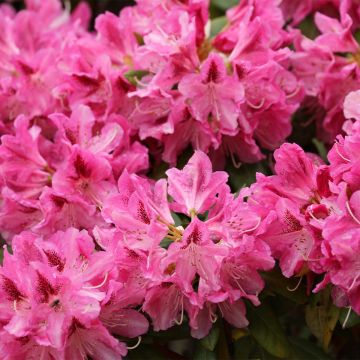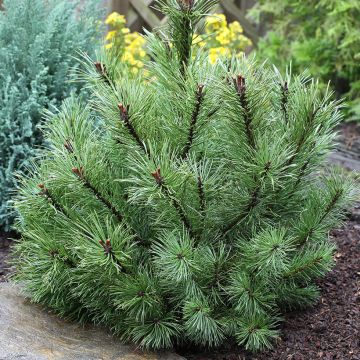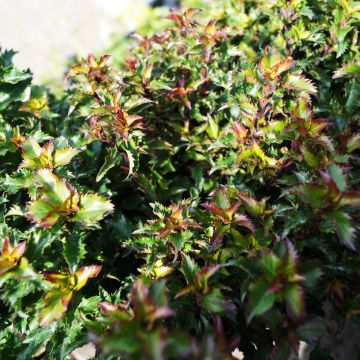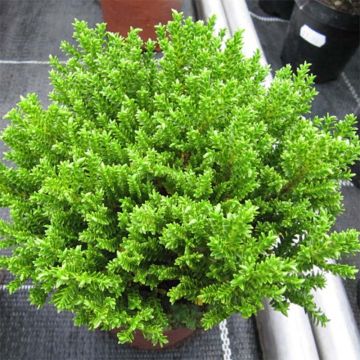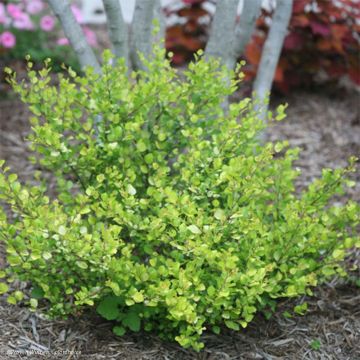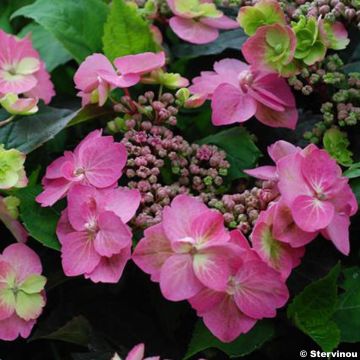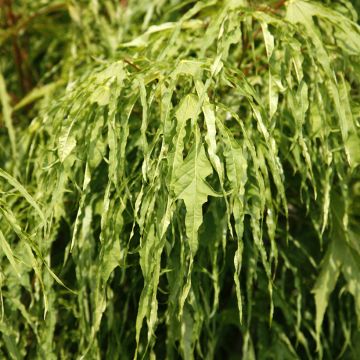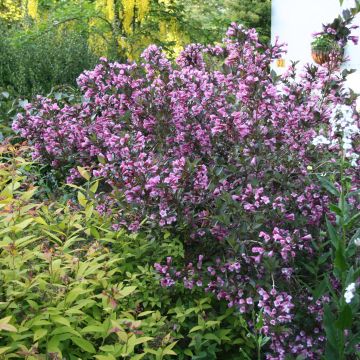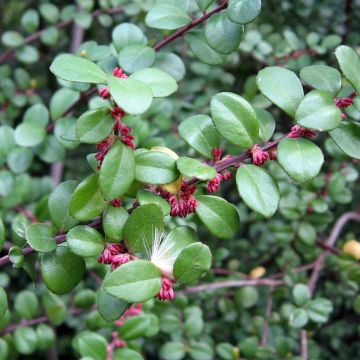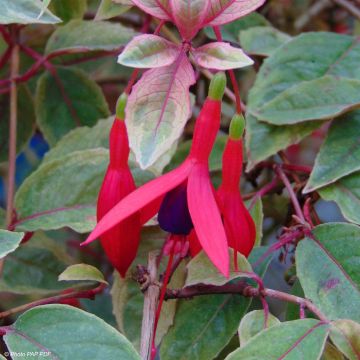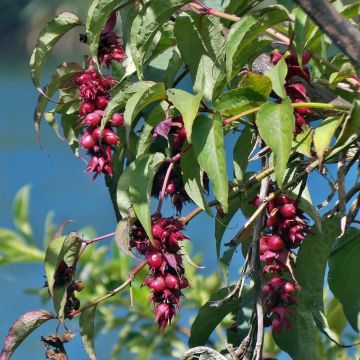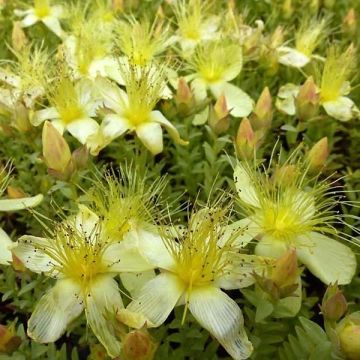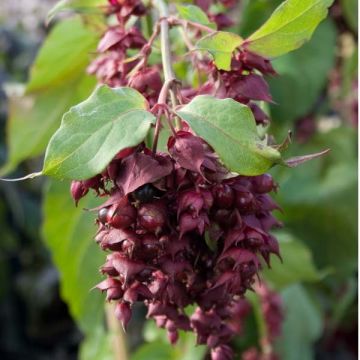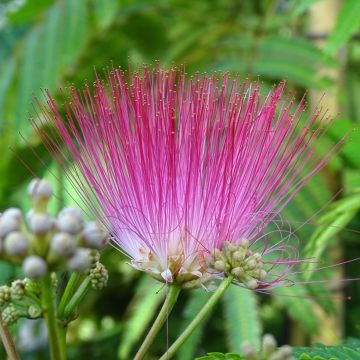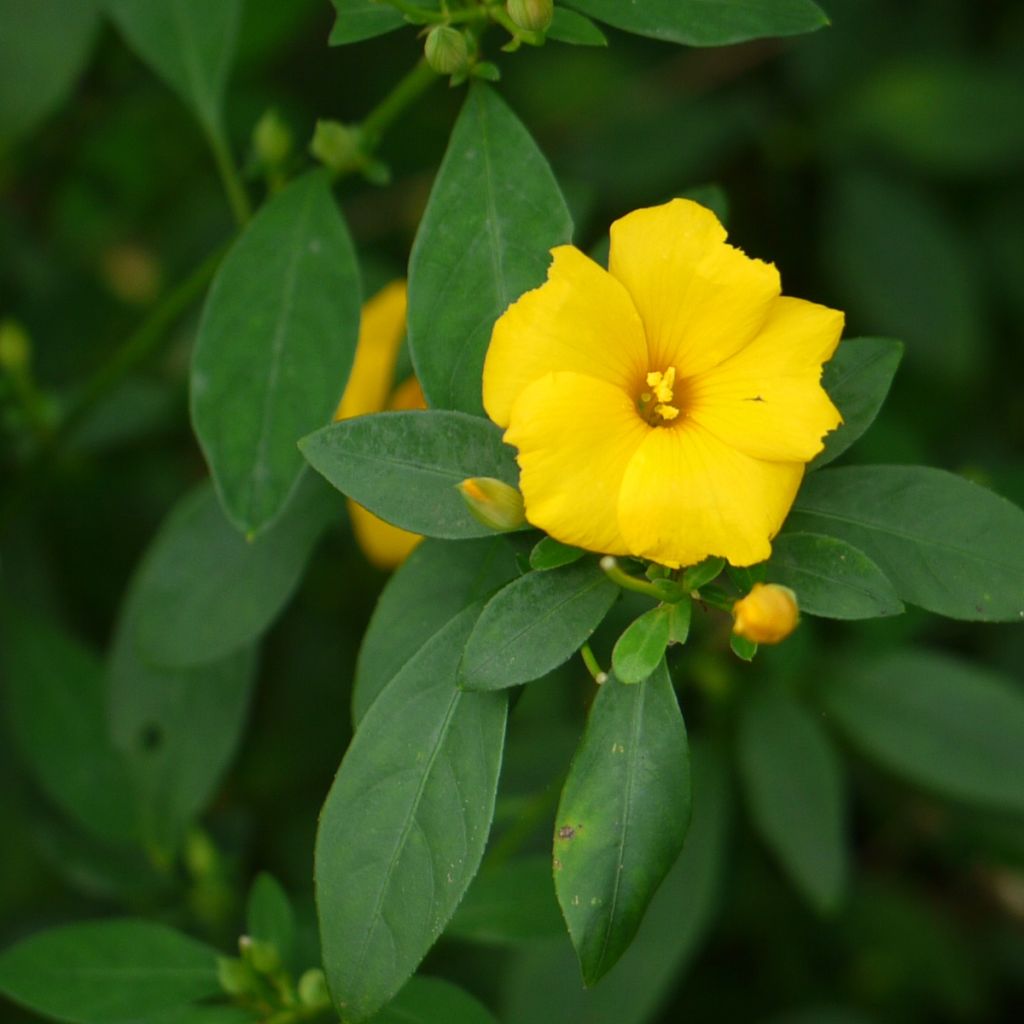

Reinwardtia indica - Lin jaune arbustif
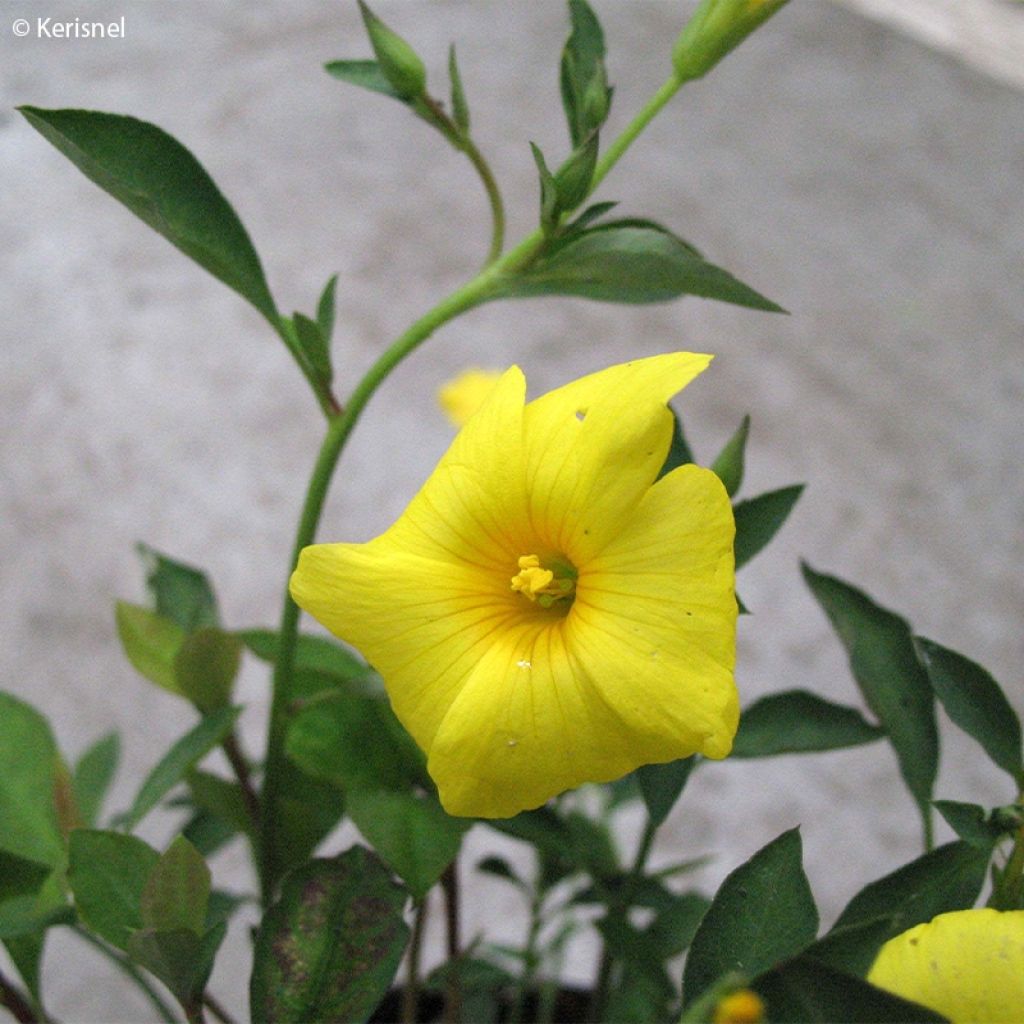

Reinwardtia indica - Lin jaune arbustif
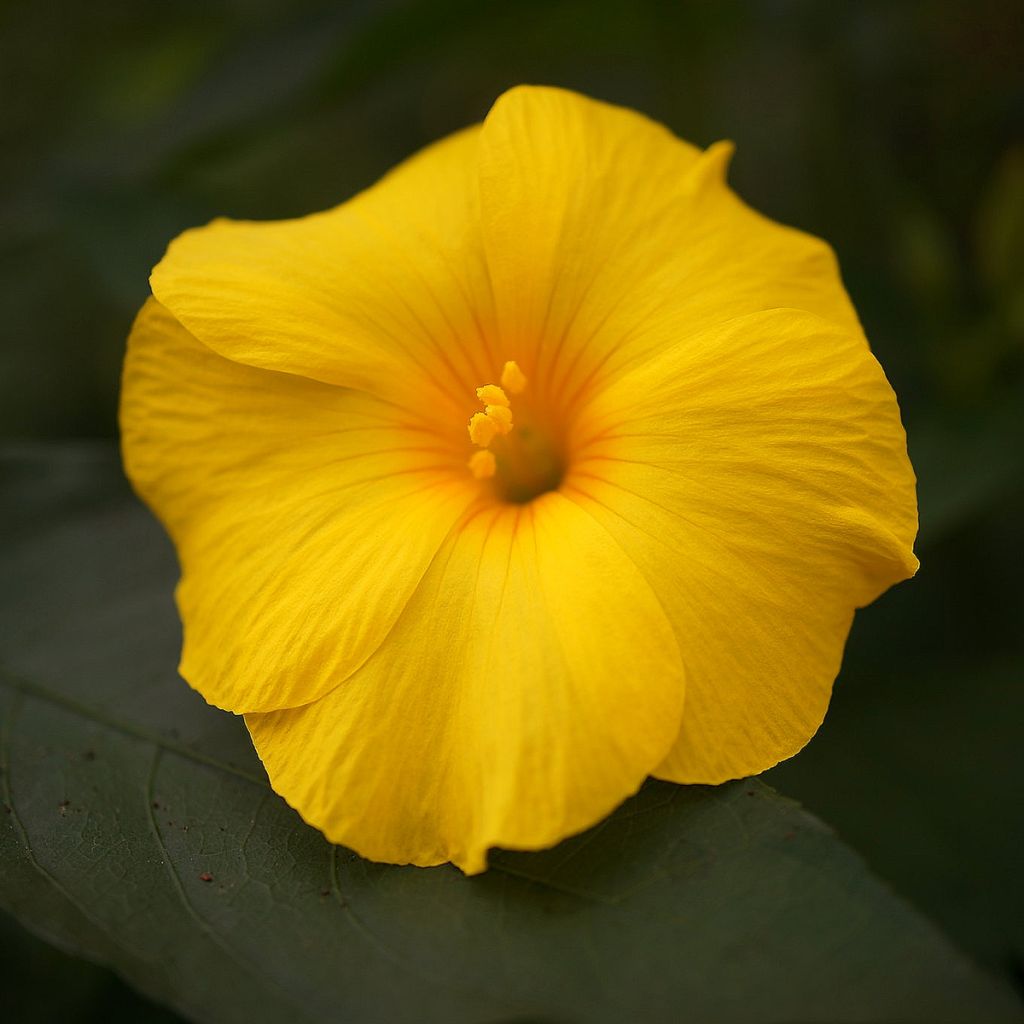

Reinwardtia indica - Lin jaune arbustif
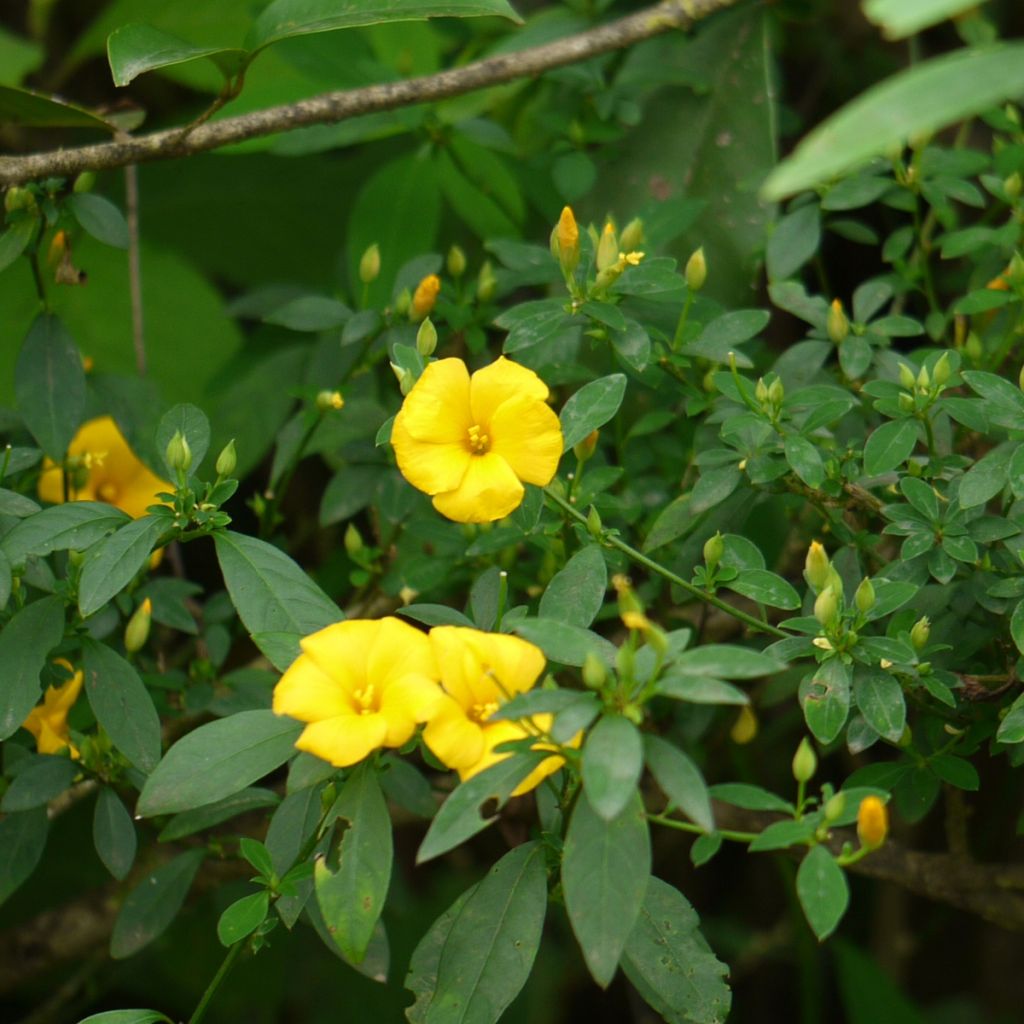

Reinwardtia indica - Lin jaune arbustif
Reinwardtia indica - Yellow Flax
Reinwardtia indica
Yellow Flax, Pyoli
This item cannot be shipped to the selected country
Delivery charge from €5.90
More information
Schedule delivery date,
and select date in basket
This plant carries a 24 months recovery warranty
More information
We guarantee the quality of our plants for a full growing cycle, and will replace at our expense any plant that fails to recover under normal climatic and planting conditions.
From €5.90 for pickup delivery and €6.90 for home delivery
Express home delivery from €8.90.
Does this plant fit my garden?
Set up your Plantfit profile →
Description
The shrubby yellow flax, in Latin Reinwardtia indica, is a perennial shrub from very mild climates that blooms for six months, from the heart of winter until spring. Truly enchanting, so bright on short days, the small golden yellow corollas of this flax give off a vanilla scent. Apart from its low hardiness, it is a generous and easy-to-care plant. It can easily spend the winter in a conservatory or in an unheated room and the beautiful season outside. In our mildest regions, it can be planted near a path, right against the house, to enjoy it to the fullest.
Reinwardtia indica, the Indian yellow flax, belongs to the Linaceae family, just like blue flax. It originates from the mountains of Northern India and southern China. It is a woody-based perennial plant, with suckering roots and a flexible shrubby habit, upright and trailing, well-branched, that will form a clump of about 60 cm (24in) in all directions, sometimes 1 m (3ft) if not pruned. It is kept compact by an annual pruning after flowering to prevent it from becoming lanky. The foliage is bright green, semi-evergreen to evergreen in winter. The leaves, arranged alternately on the branches, are oblong in shape with prominent veins and measuring about 8 cm (3in) in length.
To bloom, the plant requires cool temperatures, between 1 and 10 °C: a heated indoor environment is not suitable. Flowering begins in January and continues continuously until April. The flowers measure about 4 cm (2in) in diameter, their base is tubular and they open into 5 bright yellow petals that overlap. They only last a few days, but new flower buds are constantly forming. The fragrance of these flowers evokes vanilla. The roots are capable of withstanding short frosts of around -7 °C (19.4°F), but freezing temperatures damage the vegetation and definitely compromise flowering.
The shrubby yellow flax is a perfect conservatory plant, to be placed in a very lightly heated veranda during winter, a cool and bright room in the house, in a cold greenhouse, or even under a porch where it doesn't freeze. It can be placed next to a Tibouchina or a Tecomaria capensis which also bloom in winter. Its cultivation in open ground is successful on the French Riviera or in the most sheltered areas of the Atlantic coast. In fact, the above-ground vegetation, including the flowers, is destroyed from -2 °C (28.4°F).
Report an error about the product description
Reinwardtia indica - Yellow Flax in pictures






Plant habit
Flowering
Foliage
Botanical data
Reinwardtia
indica
Linaceae
Yellow Flax, Pyoli
India
Other Shrubs A to Z
Planting and care
Reinwardtia indica is most often cultivated in a pot with good rich and well-draining soil, remaining fairly moist throughout the growing season from spring to summer. In winter, when it blooms, watering is reduced. This plant requires temperatures between 1 and 10 °C (33.8 and 50°F) to flower. In summer, partial shade exposure is appreciated. In winter, a few hours of sunlight are necessary.
Outdoor cultivation in the open ground can be attempted in the mildest regions, where temperatures do not drop below -3 °C (26.6°F), as frost destroys vegetation and compromises flowering. The stump, on the other hand, can withstand -7 °C (19.4°F) in well-drained soil. It must be pruned each spring, after flowering, but before the young shoots start growing again, quite severely, above the 2nd bud of each stem. It is also possible to prune to the ground, and the plant will renew its growth each year.
Planting period
Intended location
Care
This item has not been reviewed yet - be the first to leave a review about it.
Summer-flowering shrubs
Haven't found what you were looking for?
Hardiness is the lowest winter temperature a plant can endure without suffering serious damage or even dying. However, hardiness is affected by location (a sheltered area, such as a patio), protection (winter cover) and soil type (hardiness is improved by well-drained soil).

Photo Sharing Terms & Conditions
In order to encourage gardeners to interact and share their experiences, Promesse de fleurs offers various media enabling content to be uploaded onto its Site - in particular via the ‘Photo sharing’ module.
The User agrees to refrain from:
- Posting any content that is illegal, prejudicial, insulting, racist, inciteful to hatred, revisionist, contrary to public decency, that infringes on privacy or on the privacy rights of third parties, in particular the publicity rights of persons and goods, intellectual property rights, or the right to privacy.
- Submitting content on behalf of a third party;
- Impersonate the identity of a third party and/or publish any personal information about a third party;
In general, the User undertakes to refrain from any unethical behaviour.
All Content (in particular text, comments, files, images, photos, videos, creative works, etc.), which may be subject to property or intellectual property rights, image or other private rights, shall remain the property of the User, subject to the limited rights granted by the terms of the licence granted by Promesse de fleurs as stated below. Users are at liberty to publish or not to publish such Content on the Site, notably via the ‘Photo Sharing’ facility, and accept that this Content shall be made public and freely accessible, notably on the Internet.
Users further acknowledge, undertake to have ,and guarantee that they hold all necessary rights and permissions to publish such material on the Site, in particular with regard to the legislation in force pertaining to any privacy, property, intellectual property, image, or contractual rights, or rights of any other nature. By publishing such Content on the Site, Users acknowledge accepting full liability as publishers of the Content within the meaning of the law, and grant Promesse de fleurs, free of charge, an inclusive, worldwide licence for the said Content for the entire duration of its publication, including all reproduction, representation, up/downloading, displaying, performing, transmission, and storage rights.
Users also grant permission for their name to be linked to the Content and accept that this link may not always be made available.
By engaging in posting material, Users consent to their Content becoming automatically accessible on the Internet, in particular on other sites and/or blogs and/or web pages of the Promesse de fleurs site, including in particular social pages and the Promesse de fleurs catalogue.
Users may secure the removal of entrusted content free of charge by issuing a simple request via our contact form.
The flowering period indicated on our website applies to countries and regions located in USDA zone 8 (France, the United Kingdom, Ireland, the Netherlands, etc.)
It will vary according to where you live:
- In zones 9 to 10 (Italy, Spain, Greece, etc.), flowering will occur about 2 to 4 weeks earlier.
- In zones 6 to 7 (Germany, Poland, Slovenia, and lower mountainous regions), flowering will be delayed by 2 to 3 weeks.
- In zone 5 (Central Europe, Scandinavia), blooming will be delayed by 3 to 5 weeks.
In temperate climates, pruning of spring-flowering shrubs (forsythia, spireas, etc.) should be done just after flowering.
Pruning of summer-flowering shrubs (Indian Lilac, Perovskia, etc.) can be done in winter or spring.
In cold regions as well as with frost-sensitive plants, avoid pruning too early when severe frosts may still occur.
The planting period indicated on our website applies to countries and regions located in USDA zone 8 (France, United Kingdom, Ireland, Netherlands).
It will vary according to where you live:
- In Mediterranean zones (Marseille, Madrid, Milan, etc.), autumn and winter are the best planting periods.
- In continental zones (Strasbourg, Munich, Vienna, etc.), delay planting by 2 to 3 weeks in spring and bring it forward by 2 to 4 weeks in autumn.
- In mountainous regions (the Alps, Pyrenees, Carpathians, etc.), it is best to plant in late spring (May-June) or late summer (August-September).
The harvesting period indicated on our website applies to countries and regions in USDA zone 8 (France, England, Ireland, the Netherlands).
In colder areas (Scandinavia, Poland, Austria...) fruit and vegetable harvests are likely to be delayed by 3-4 weeks.
In warmer areas (Italy, Spain, Greece, etc.), harvesting will probably take place earlier, depending on weather conditions.
The sowing periods indicated on our website apply to countries and regions within USDA Zone 8 (France, UK, Ireland, Netherlands).
In colder areas (Scandinavia, Poland, Austria...), delay any outdoor sowing by 3-4 weeks, or sow under glass.
In warmer climes (Italy, Spain, Greece, etc.), bring outdoor sowing forward by a few weeks.

































